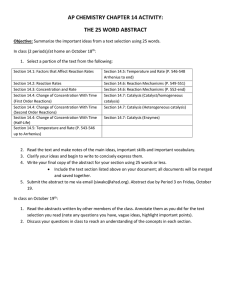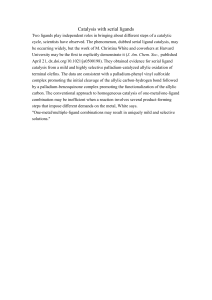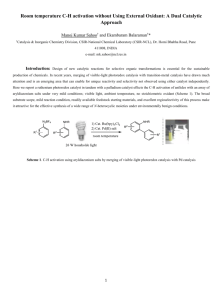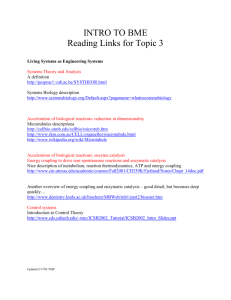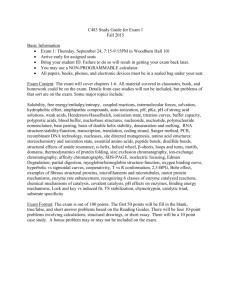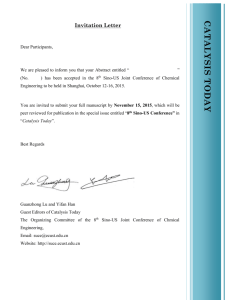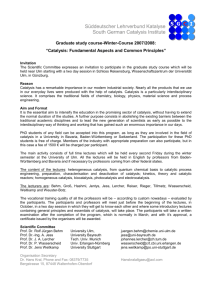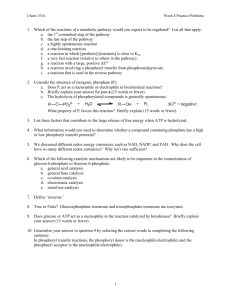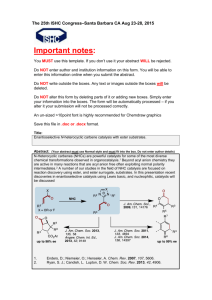MoreExam1Questions
advertisement
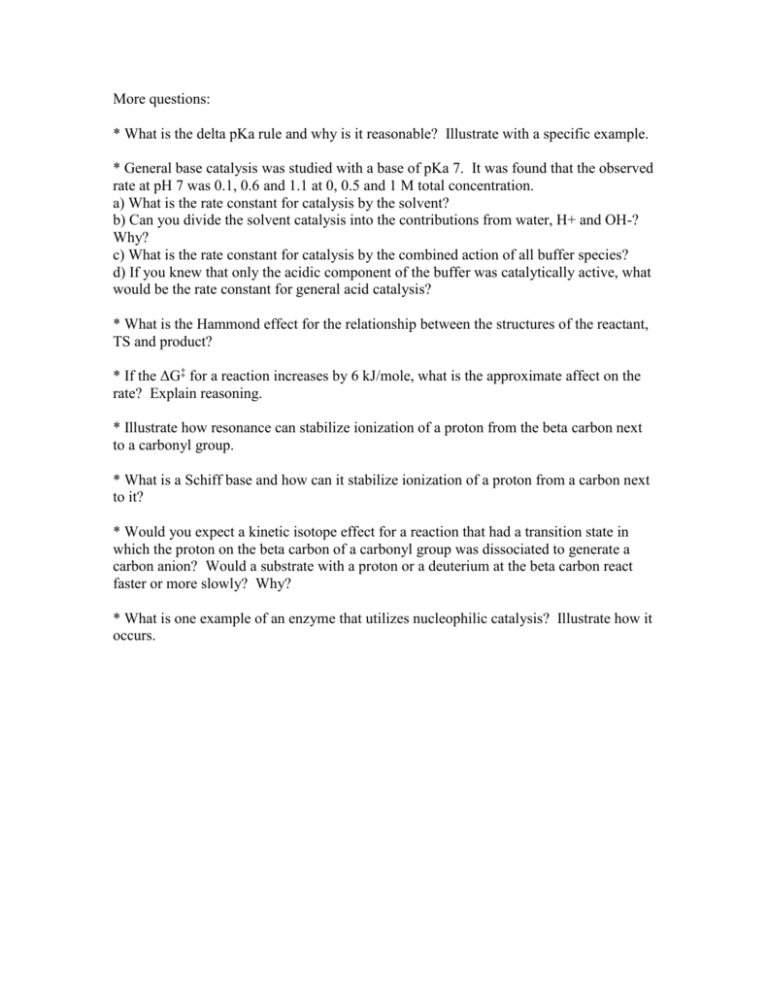
More questions: * What is the delta pKa rule and why is it reasonable? Illustrate with a specific example. * General base catalysis was studied with a base of pKa 7. It was found that the observed rate at pH 7 was 0.1, 0.6 and 1.1 at 0, 0.5 and 1 M total concentration. a) What is the rate constant for catalysis by the solvent? b) Can you divide the solvent catalysis into the contributions from water, H+ and OH-? Why? c) What is the rate constant for catalysis by the combined action of all buffer species? d) If you knew that only the acidic component of the buffer was catalytically active, what would be the rate constant for general acid catalysis? * What is the Hammond effect for the relationship between the structures of the reactant, TS and product? * If the ΔG‡ for a reaction increases by 6 kJ/mole, what is the approximate affect on the rate? Explain reasoning. * Illustrate how resonance can stabilize ionization of a proton from the beta carbon next to a carbonyl group. * What is a Schiff base and how can it stabilize ionization of a proton from a carbon next to it? * Would you expect a kinetic isotope effect for a reaction that had a transition state in which the proton on the beta carbon of a carbonyl group was dissociated to generate a carbon anion? Would a substrate with a proton or a deuterium at the beta carbon react faster or more slowly? Why? * What is one example of an enzyme that utilizes nucleophilic catalysis? Illustrate how it occurs.
